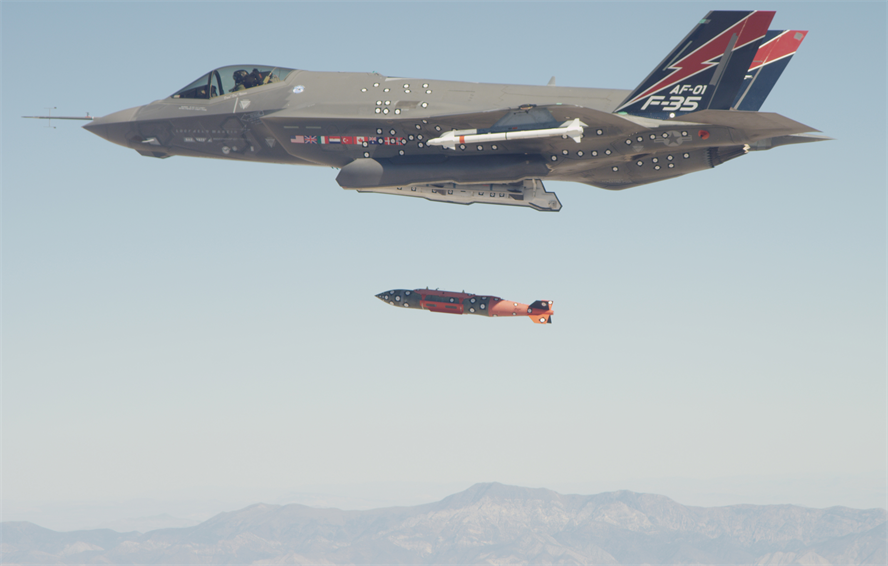
An F-35A completed the first in-flight weapons release of a 2,000 pound GBU-31 BLU-109 Joint Direct Attack Munition from a fifth generation fighter on Oct. 16, 2012. Courtesy photo.
The Air Force is looking to develop a new class of direct-attack munitions—those dropped from an attacking aircraft either over or near the target—that would be stealthy, maneuverable, and potentially have some electronic warfare capability, Air Combat Command chief Gen. Hawk Carlisle said in an interview.
The weapon would equip the new Penetrating Counter-Air jet and other stealthy platforms able to penetrate an enemy integrated air defense system, he said. “If we get to the enemy IADS sites, we have to have a weapon that can penetrate” those defenses “to hit the actual surface-to-air missile” batteries and associated radars, Carlisle said in the late January interview.
The weapon would have reduced signature and “broadband acquisition and tracking capability” to be able to pursue ground targets trying to flee the area, he said. The reason such a weapon is needed is that adversaries will have the ability in the not-too-distant future to shoot down or fool an existing weapon after it’s dropped from an aircraft but “before it impacts the target.”
The SSW will fill a major hole in the Suppression of Enemy Air Defense (SEAD) mission, he said. Carlisle did not specify when such a weapon will be needed, but spoke about it in the context of the Air Superiority 2030 report done last year.
In the nearer future, the Air Force wants a quick-turnaround additional source of small, precision-guided, and maneuvering munitions to equip the F-35 in time to be part of the Block 3F suite of capabilities on the jet, according to a Feb. 10 service solicitation.
This requirement is to provide ACC with a “quick reaction capability” for a weapon in the 500-pound class that could pursue a moving target and be “compatible” with the F-35A Block 3F. The Air Force isn’t interested in a new development, specifying a mature design, “already in production,” and it wants to buy about 400 units.
A vendor could be selected in calendar 2017 and deliveries could start as soon as six months after contract award. That would coincide with planned operating capability of the 3F, which USAF said in the notice would be May 15, 2018. The contract “cannot impact the current fielding schedule” for the 3F software build, USAF said.
